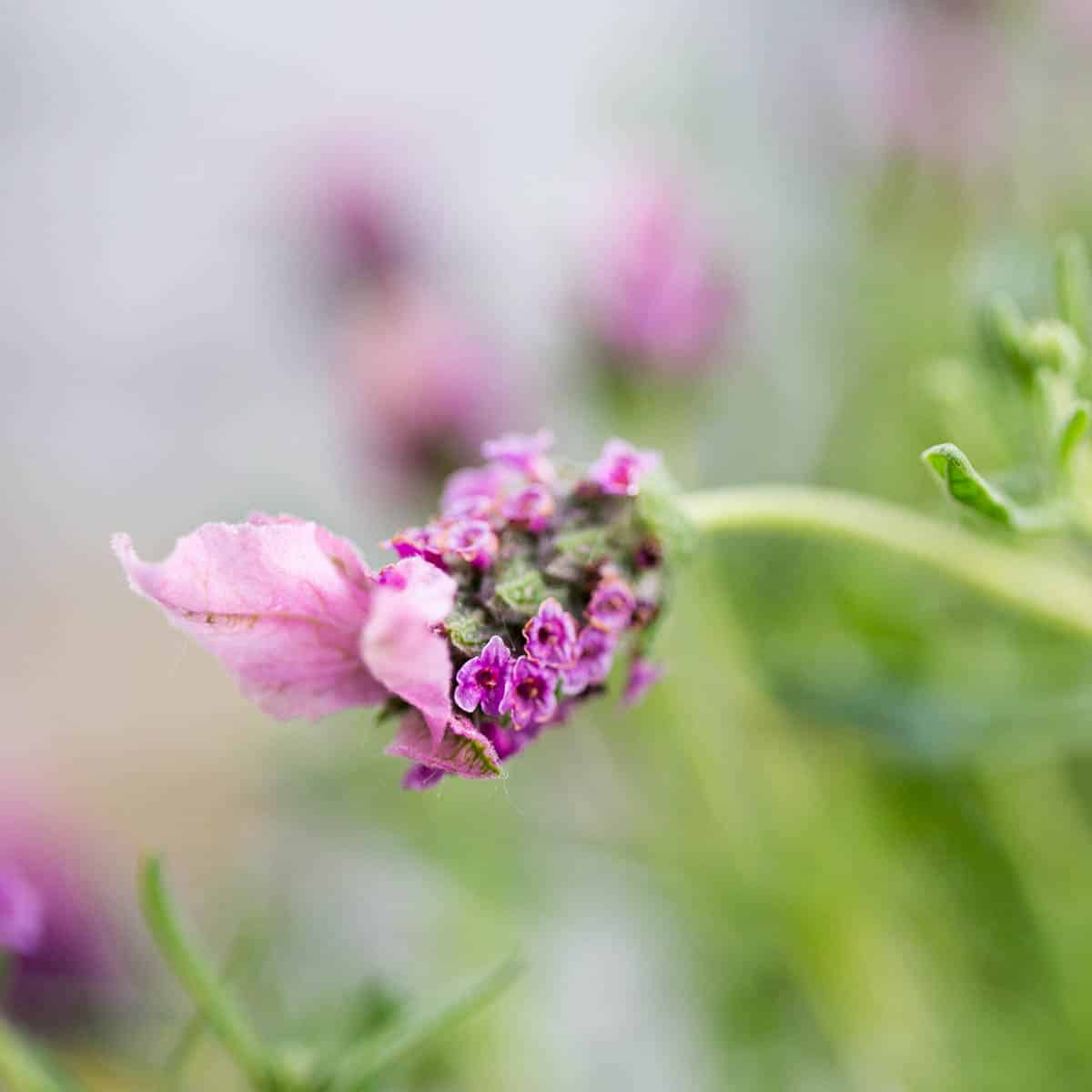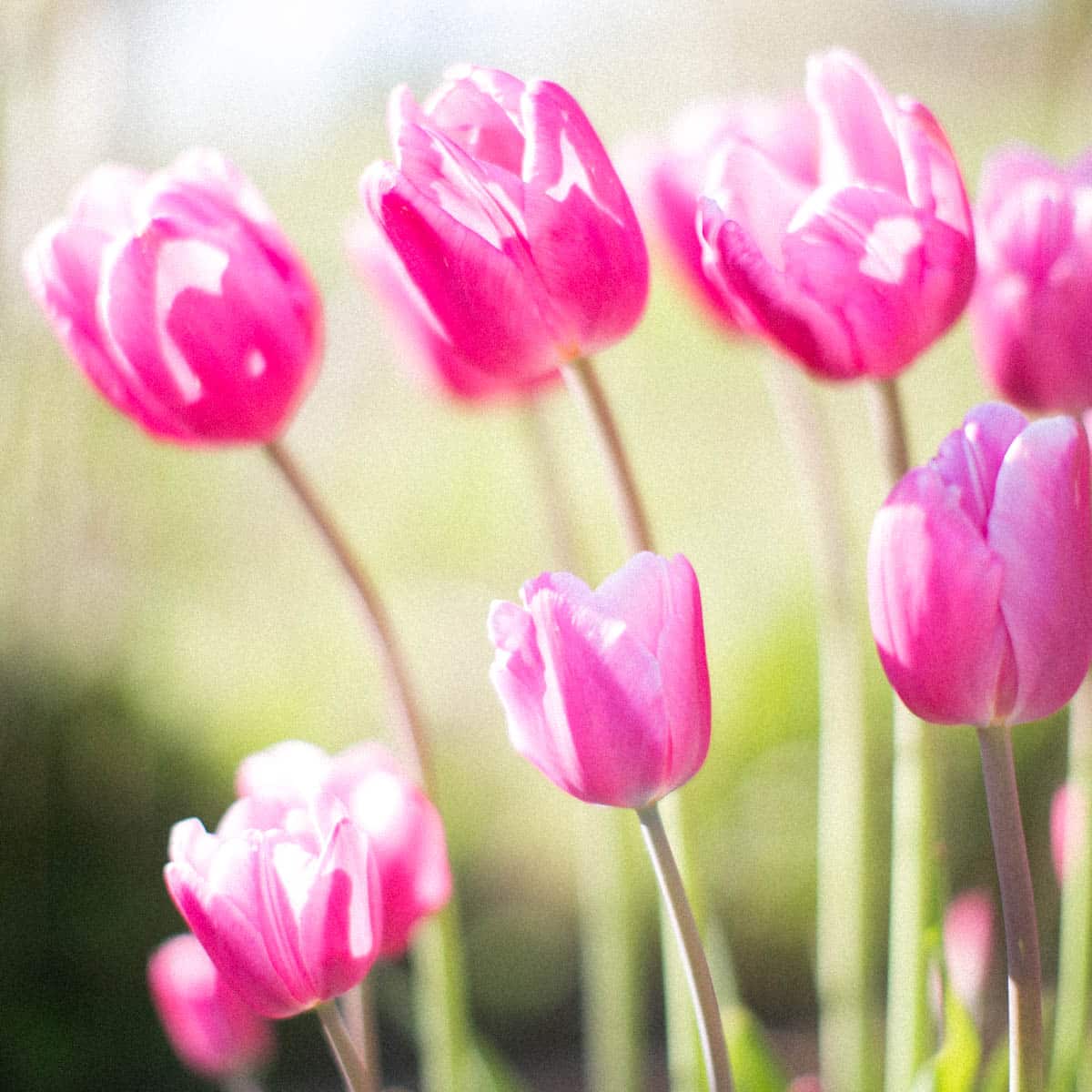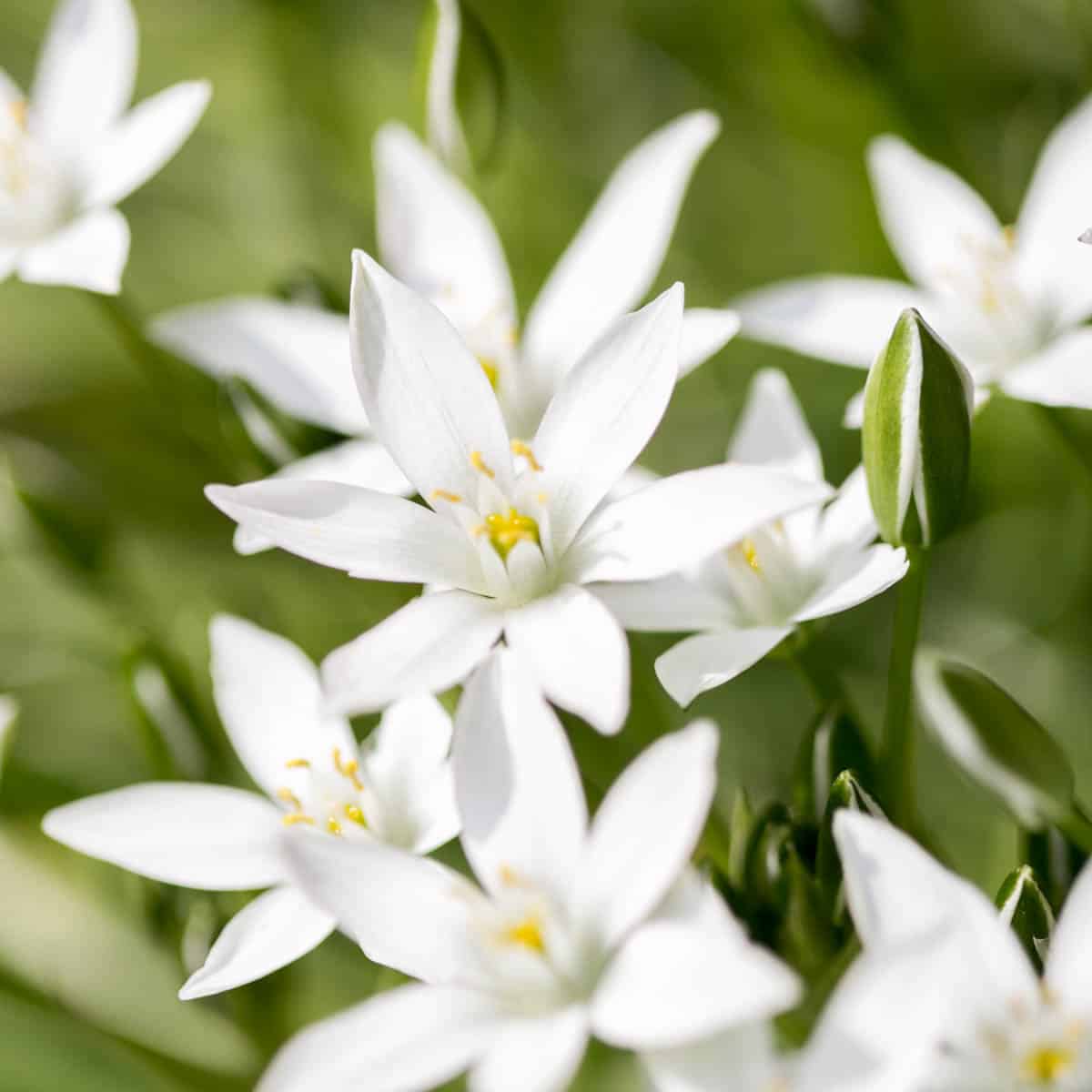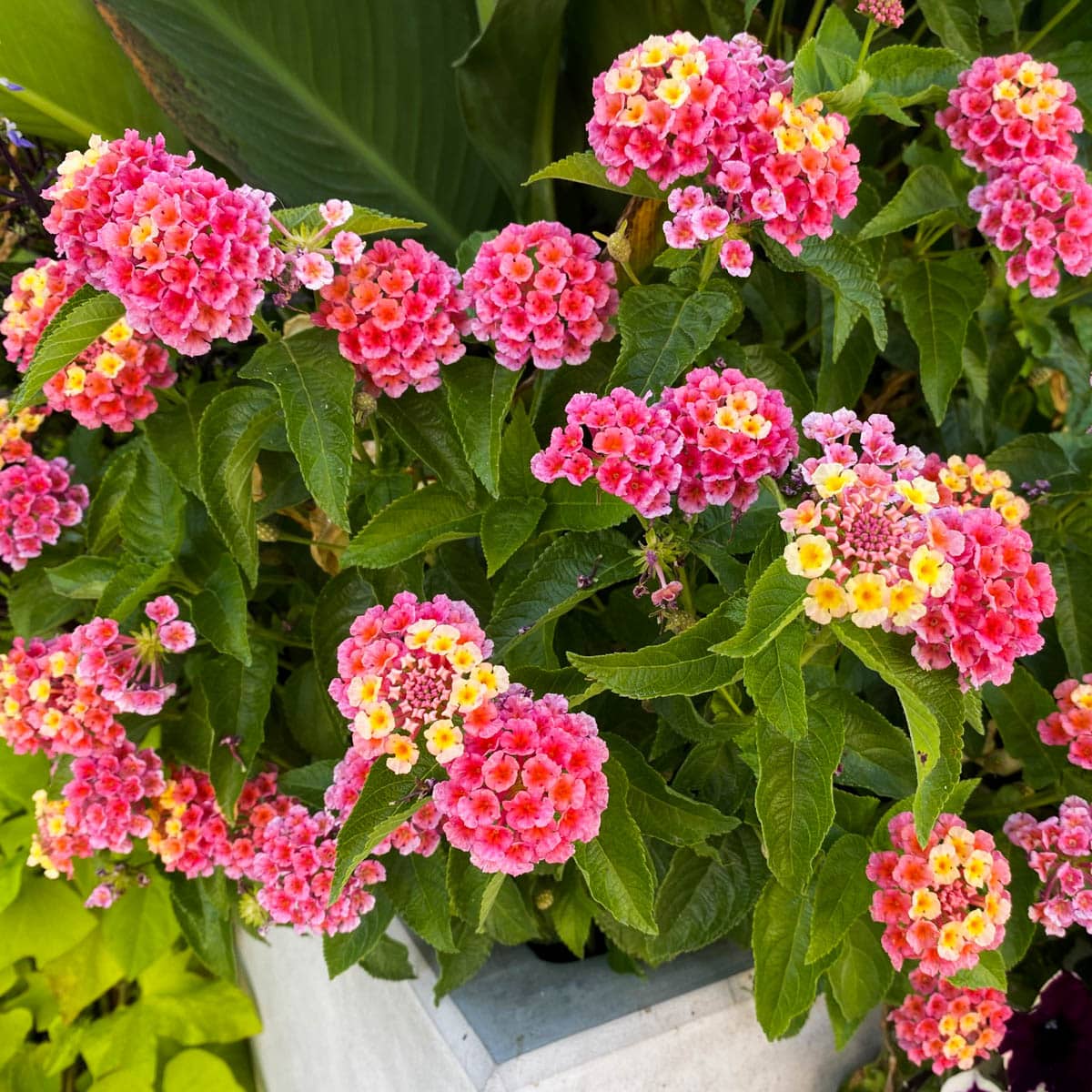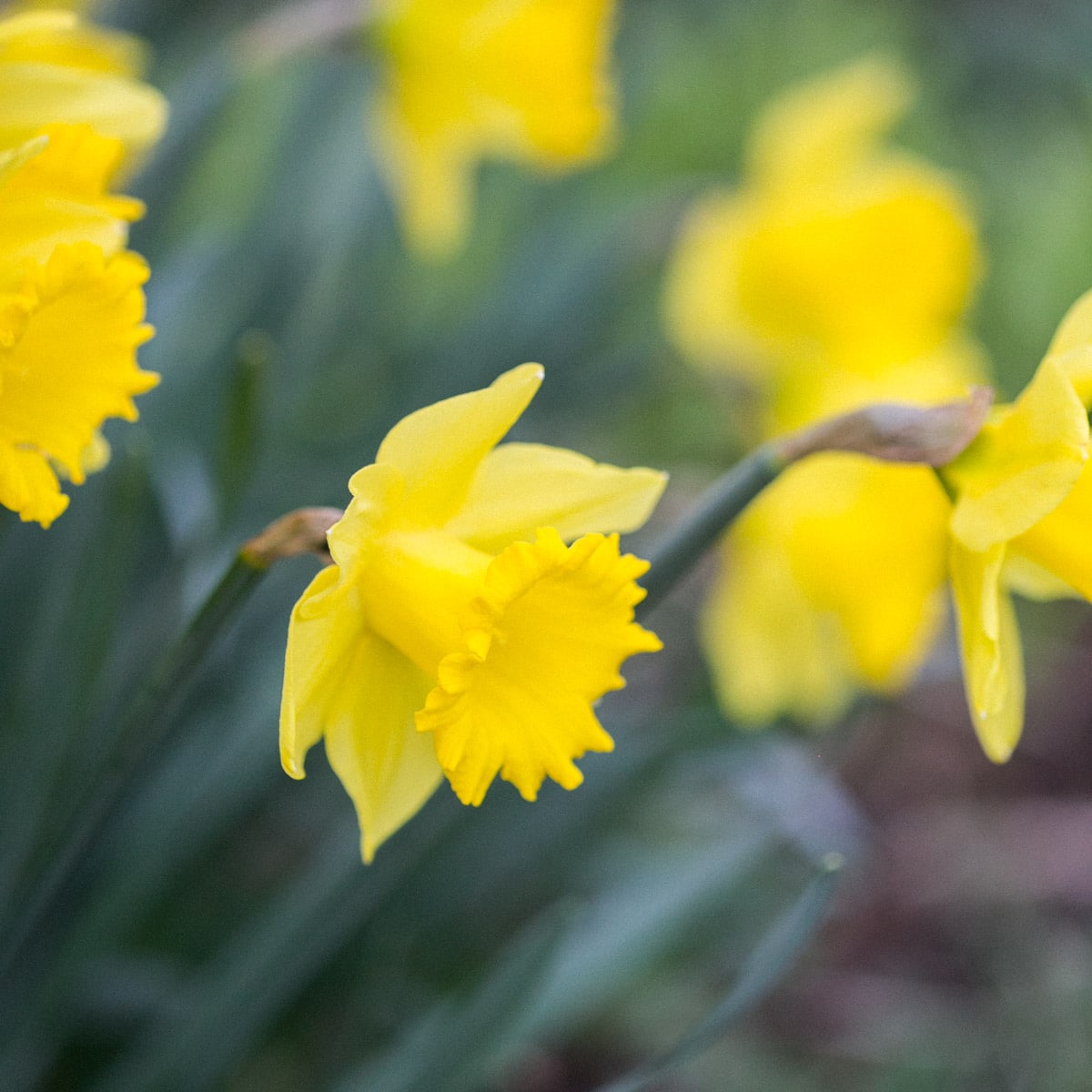How + When To Harvest Sunflower Seeds For Eating
Learn how to harvest sunflower seeds for eating in this simple step by step guide!
Boasting bright yellow petals and tall stalks, sunflowers make a regal statement in the flower garden. They complete their life cycle with drooping sunflower heads that are ripe with the gray toned seeds that we all know and love.
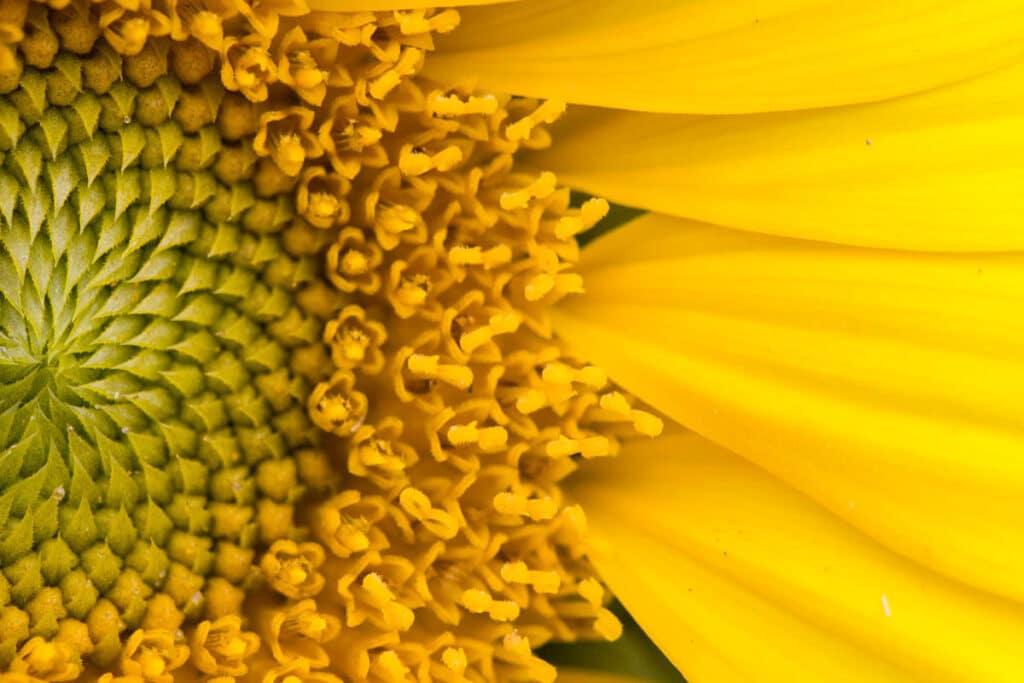
These sunflower seeds were once revered by Native Americans, they are eaten by birds in suet cakes and are consumed as a health food today.
The seeds of sunflowers line up in a single layer inside of the sunflower head, bursting with vitamins and minerals that support your immune system.

Incredibly useful and nutritious, the seeds can be stored in an airtight container over the winter months and planted the following year. You can harvest them, bake them on a cookie sheet and enjoy the nutritious seeds!
This article covers how the seeds are developed during the sunflower life cycle, the best time to harvest the seeds, how to harvest + store seeds, and how to dry them.
Sunflower Life Cycle + Harvesting Seeds
Sunflowers, known in Latin by Helianthus annuus, undergo a life cycle that results in ripe seeds at the end of the season.
These majestic flowers are one of the most popular flowers in the garden, but their anatomy is actually complex.
Sunflowers appear to be one flower with a thick stem, leaves and one flower head, but they are actually made up of hundreds of tiny flowers.

Looking at the sunflower head, you’ll see hundreds of tiny flower heads, called the florets. Ray flowers grow on the outer circumference of the flower head, and within the center disk flowers grow.
These disk flowers contain both male and female structures, allowing them to self pollinate. They complete their life cycle by becoming the beloved edible seeds we know and love!
One sunflower head can contain up to 2,000 seeds! The seeds will either fall to the ground and germinate next spring, or get eaten by a hungry bird, or be collected and stored by you!

Harvesting sunflower seeds at the end of the growing season is one of the best fall activities!
How Do I Know When Sunflower Seeds Are Ready to Harvest?
Sunflowers take several months to fully mature. Towards the end of that time, you’ll see seeds develop under the tiny floret flowers.
Here are a few signs that the seeds are ready for harvest:
- The sunflower develops dark spots at the back of the head
- The back of the head turns yellow, then brown
- The flower petals have completely faded and desiccated (they are completely dried out) + are falling off
- The seeds themselves look full and have fully developed. Full, plump seeds are ripe seeds!

Keep in mind that lots of critters will be after the yummy sunflower seeds. The good news is there are several ways to protect your seeds.
When To Harvest
Wait until the back of the flower head has turned yellow and has brown spots before harvesting your seeds. (Eventually, the flower head will turn completely brown, and they can be harvested at this time as well.
The flower petals will be dry and falling off (completely desiccated).
This is usually at the end of summer or early fall.
The seeds will be ripe and plump, indicating they are ready to harvest.
Make sure to collect sunflower seeds before a heavy frost kicks in. Seeds will withstand light frosts early in the season.
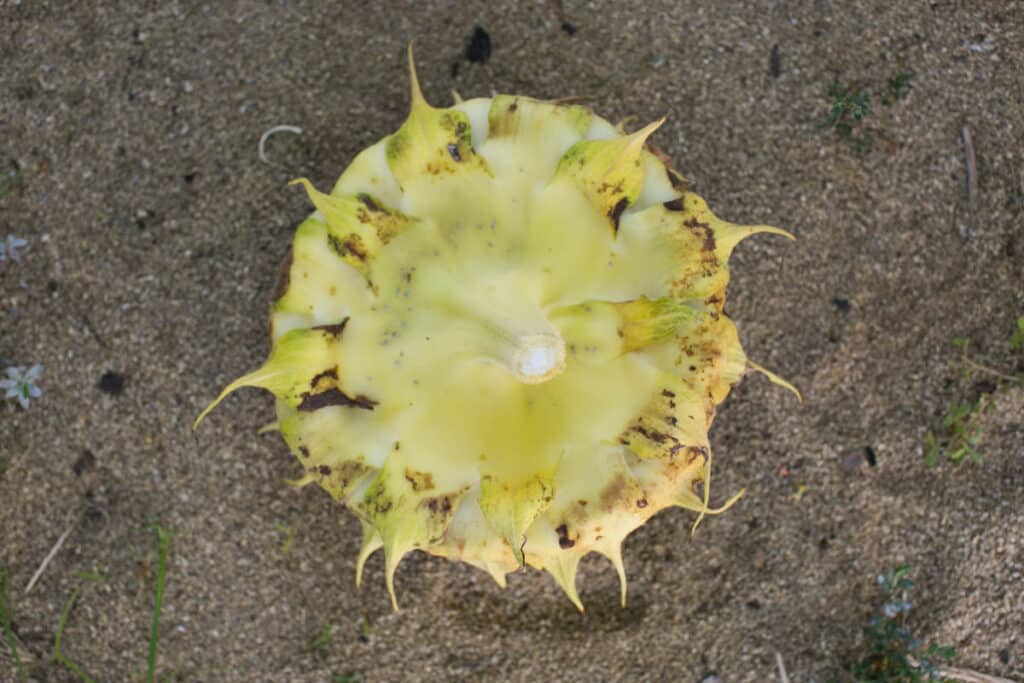
Methods For Harvesting Sunflower Seed Heads
The main goals for harvesting sunflower seeds are to dry the seeds + protect them from birds and other critters.
There are a few popular options for harvesting the seeds:
- Harvest the sunflower head off of the stalk, remove the seeds, and set them out in a flat layer to dry (this is our preferred method)
- Allow heads to dry on the stem. Wait for the sunflower seeds to dry on the stalk throughout fall before harvesting. Many people will tie a brown paper bag around the head of the sunflower to prevent birds from stealing the seeds (you can also use bird netting)
- Or, remove the sunflower head by cutting off the large flower head, then hang it in the garage to dry (this protects it from birds!)

Is your sunflower head ready to harvest for seeds? The seeds will look plump and full, the flowers will be wilted and falling off, and the back of the flower head will be yellow with brown spots, or completely brown (not green).
Step By Step Instructions For Harvesting
Follow these simple steps for harvesting + removing sunflower seeds from the head:
- Make a clean cut at the back of the flower head to separate the head from the thick stalk
- Brush off the top layer of floret flowers from your sunflower head. They should brush off easily. Do this outside to save on mess!

- Set out a large piece of parchment paper or newspaper to catch your seeds
- Pull, twist and push the sunflower seeds out of the sunflower head. This can take a little effort. Break the sunflower head up to help squeeze out the seeds!

- Lay the seeds out on a flat surface to begin the drying process
- Allow your seeds to dry for several days before storing. A baking tray, paper towels, or parchment paper works well for drying. Baking trays keep the seeds from getting bumped around!

Note: You can easily test ripening seeds by gently pulling them out of the flower head. When not ripe, they are smaller and not as full. The fully developed seeds will be much more plump!
How To Dry
Once the seeds are harvested, place them in a thin layer on a cookie sheet or parchment paper. Let them dry for several days.

How To Easily Crack + Shell Sunflower Seeds
Once you’ve harvested and dried your sunflower seeds, the next step is to remove the outer shell.
Removing the shell from sunflower seeds can seem like a daunting task.
But, there is an easy way to crack and shell your seeds! Using a plastic bag and rolling pin, you can process your sunflower seeds in just minutes:
- Place your sunflower seeds in a plastic bag. Smooth them into a single layer (don’t stuff your bag)- this should be about one cup of seeds
- Using a rolling pin, apply even pressure over your sunflower seeds to crack the shells
- Dump the seeds and shells into a bowl of water. The seeds will sink to the bottom and the sunflower shells will float to the top
What To Do With Your Seeds
There are so many options of what you can do with sunflower seeds:
- Dry and store seed over winter and eat them! Enjoy them as a healthy snack, or crack them open and use them as a garnish on salads
- Bake delicious bread recipes featuring the tasty seeds
- Save Your Seeds For Next Year: You can also save some of your sunflower seeds and re plant them the following spring, saving you money. Save the seeds in an air tight container out of direct sunlight. As soon as the last chance of frost is gone in the spring, plant your seeds. You’ll soon have beautiful flowers to enjoy all summer long!
- Use your sunflower seeds for bird food! When the bounty of seeds available to birds evaporates in fall, you’ll be able to feed the flock.

Volunteer Sunflowers: If you let your sunflower seeds dry on the stalk and fall to the ground at the end of the season, there is a chance that new volunteer sunflowers will grow next spring. You will be competing with birds, squirrels and other wildlife for the seeds, however.
How To Store Sunflower Seeds
After drying, store seeds in a cool, dark place out of direct sunlight.
Use an airtight jar such as a mason jar with a lid to store them. Make sure to label the container with the date.
Store seeds in a dry location over winter. Make sure to keep moisture out of the container or the seeds will rot and not be viable for next year’s garden.

Harvesting Different Sunflower Varieties
There are hundreds of different varieties of sunflowers, and they all produce different amounts and sizes of seeds!
Depending on which sunflower variety you grow, you may end up with hundreds of seeds from one flower head, or just a few larger seeds.
Small sunflower varieties yield less seeds per head, but the plant often has many flower heads.
The best varieties for growing edible seeds are Mammoth Gray and Super Snack.
Learn how to grow Teddy Bear Sunflowers here.
Using Sunflower Seed Shells As Mulch
Not sure what to do you with your seed shells? They actually make an excellent mulch.
Breaking down slowly over time, sunflower seeds shells can be used as mulch to insulate plants from the winter chill.
They will also help keep moisture in the soil on warm summer days. Since the empty shells take at least three years to compost, they are a long lasting mulch option.

How To Roast Sunflower Seeds
Sunflower seeds are easily roasted, which enhances the nutty flavor of the seed. It’s an extra step that you don’t have to do, but roasted and salted sunflower seeds have that extra crunch and flavor that make it worth while!
You can also use roasted seeds to create sunflower butter, which is delicious.
Sunflower seeds make a nutritious snack that adults and kids both love.
They can be roasted in the oven at 350 degrees for 7-10 minutes.
If you love plain sunflower seeds, simply crack them open and store them!

Final Thoughts On Harvesting Sunflower Seeds
Sunflowers offer us many gifts throughout the growing season. Their vibrant yellow beauty lasts all summer, and when it fades we are offered delicious seeds from the plant.
To harvest seeds, wait until the outer petals of the sunflower have faded and the back of the flower head has turned yellow-brown. Then cut the stalk and follow our tips on seed harvesting!
Bursting with nutrients, these plump seeds are easily harvested and can then be roasted on a baking sheet, eaten raw, made into nut butter, or fed to the birds! You can even save your sunflower seeds and re plant them next year.
We hope you enjoy your sunflower seed harvest this fall. Let us know in the comments what you did with your bounty of seeds!

